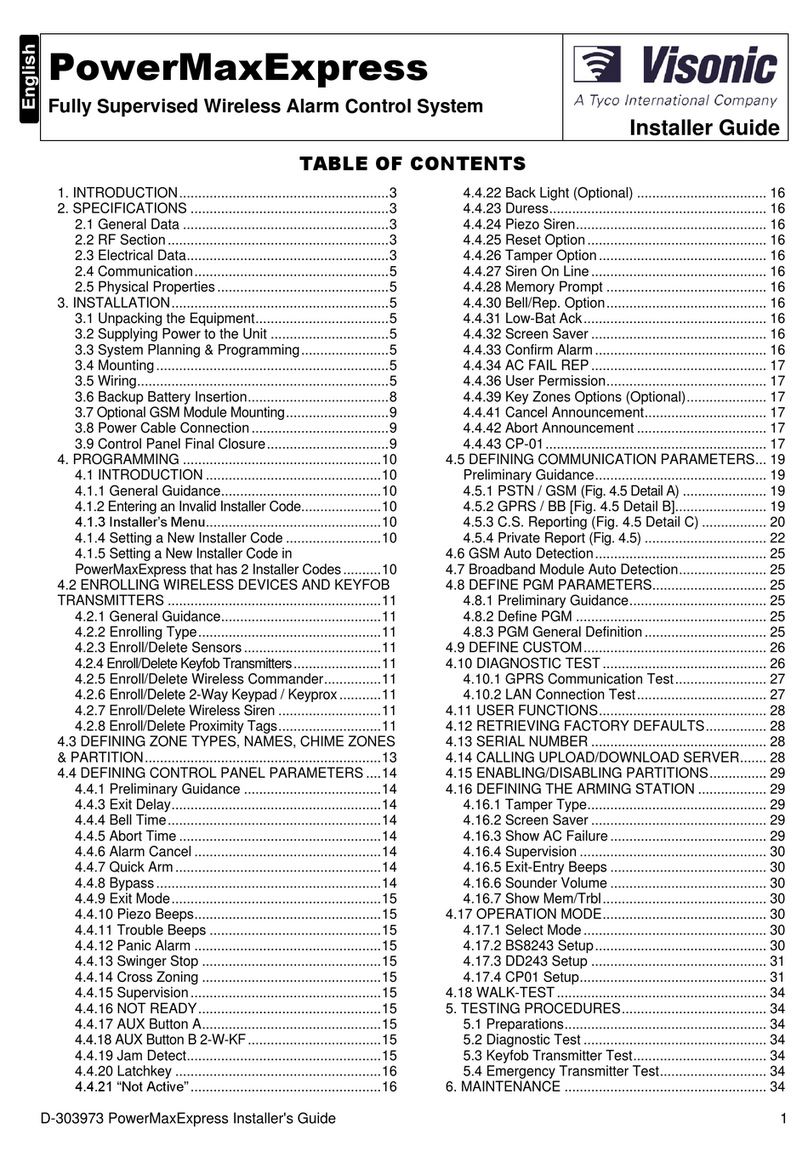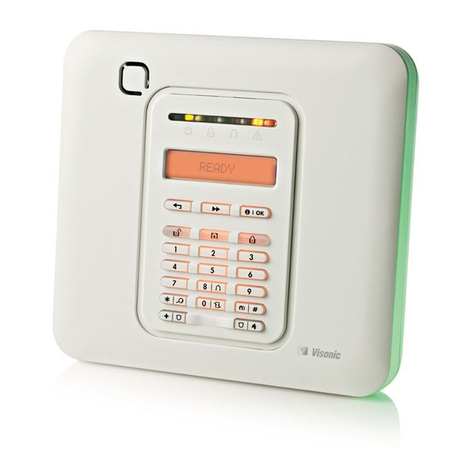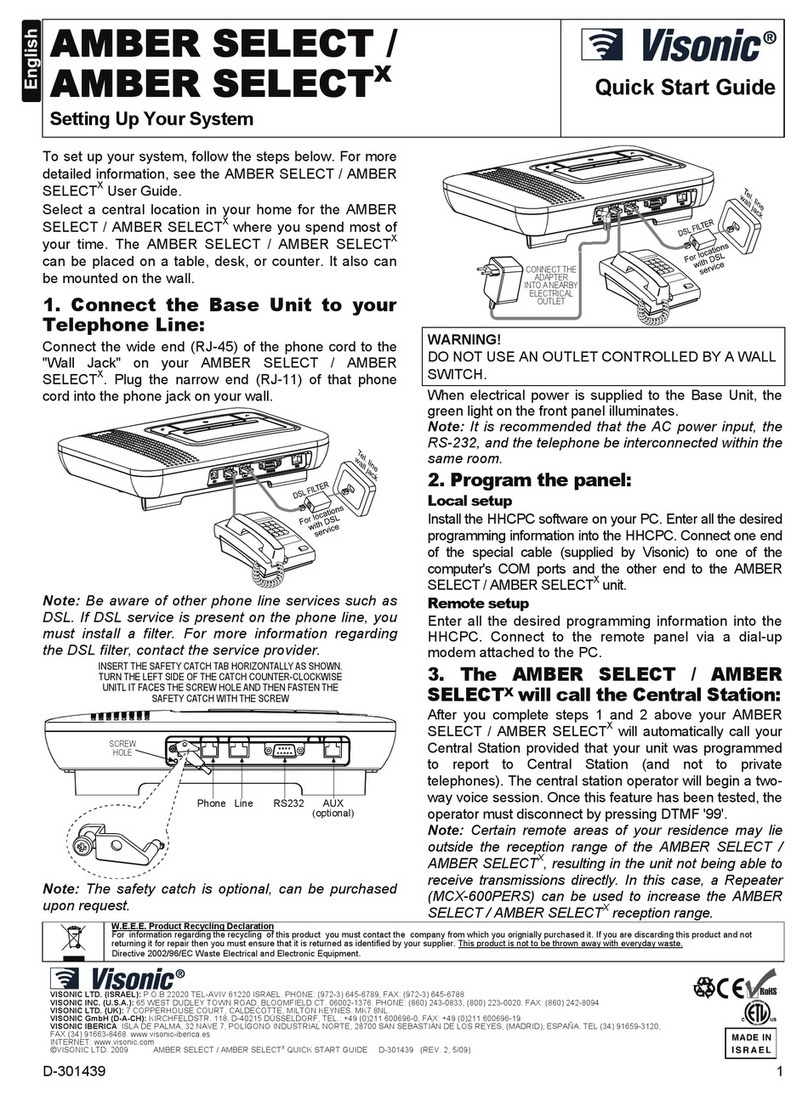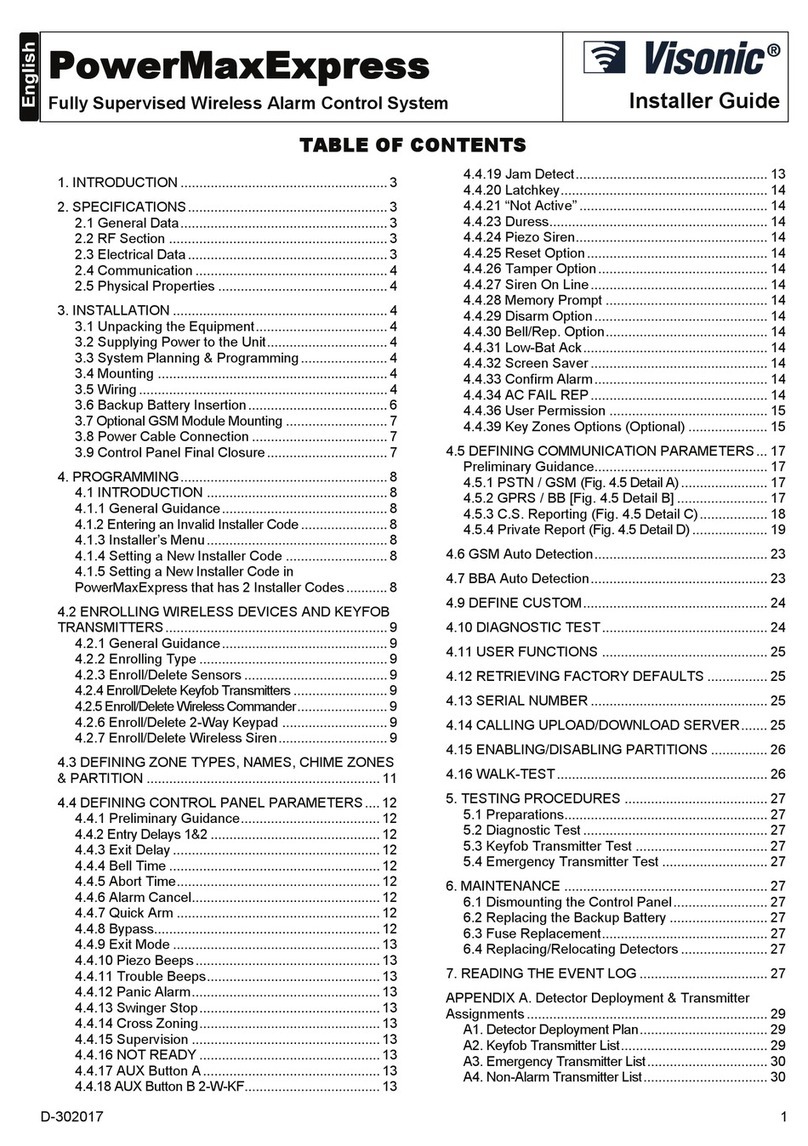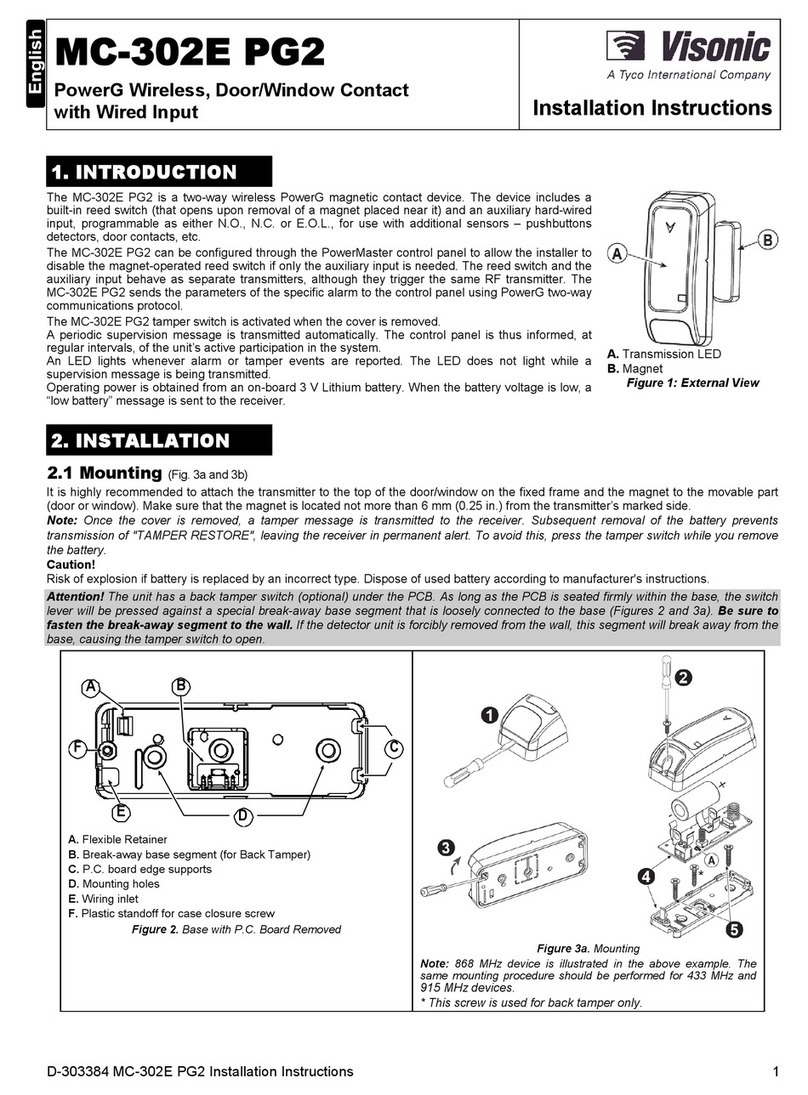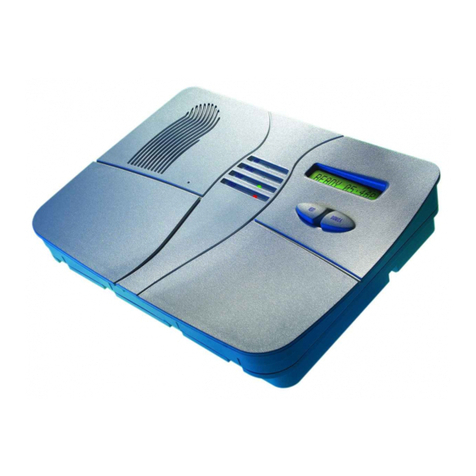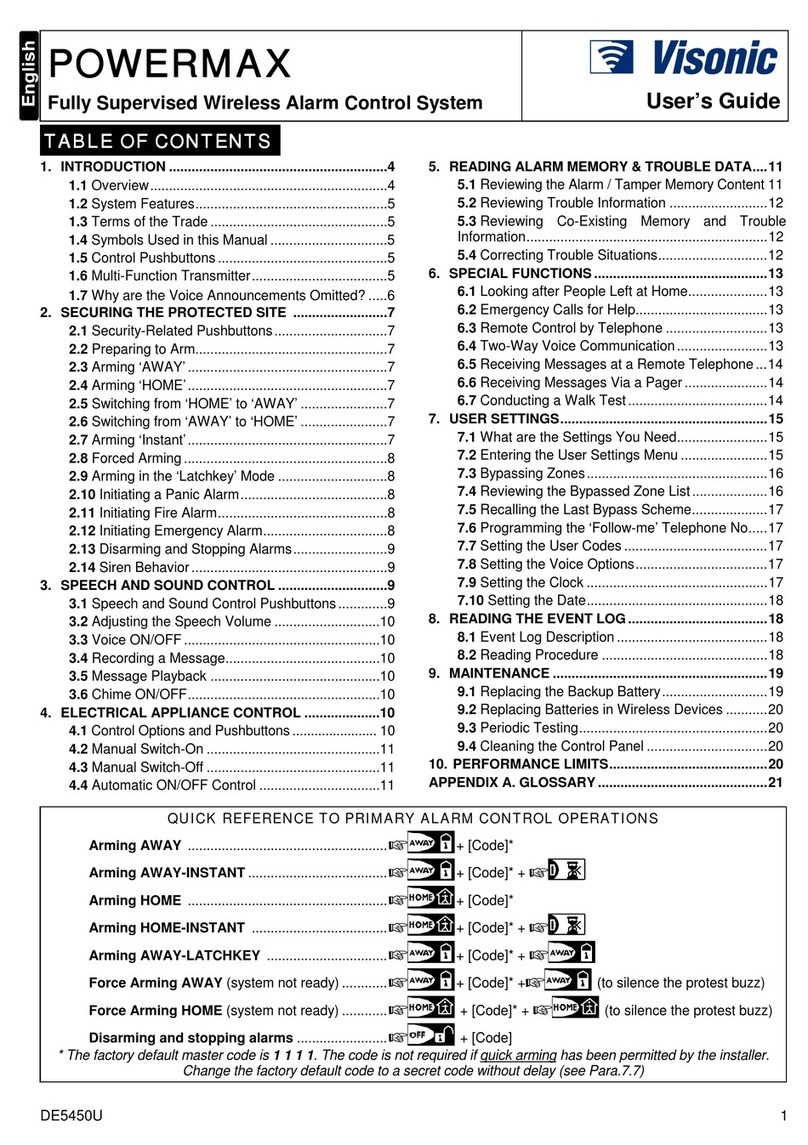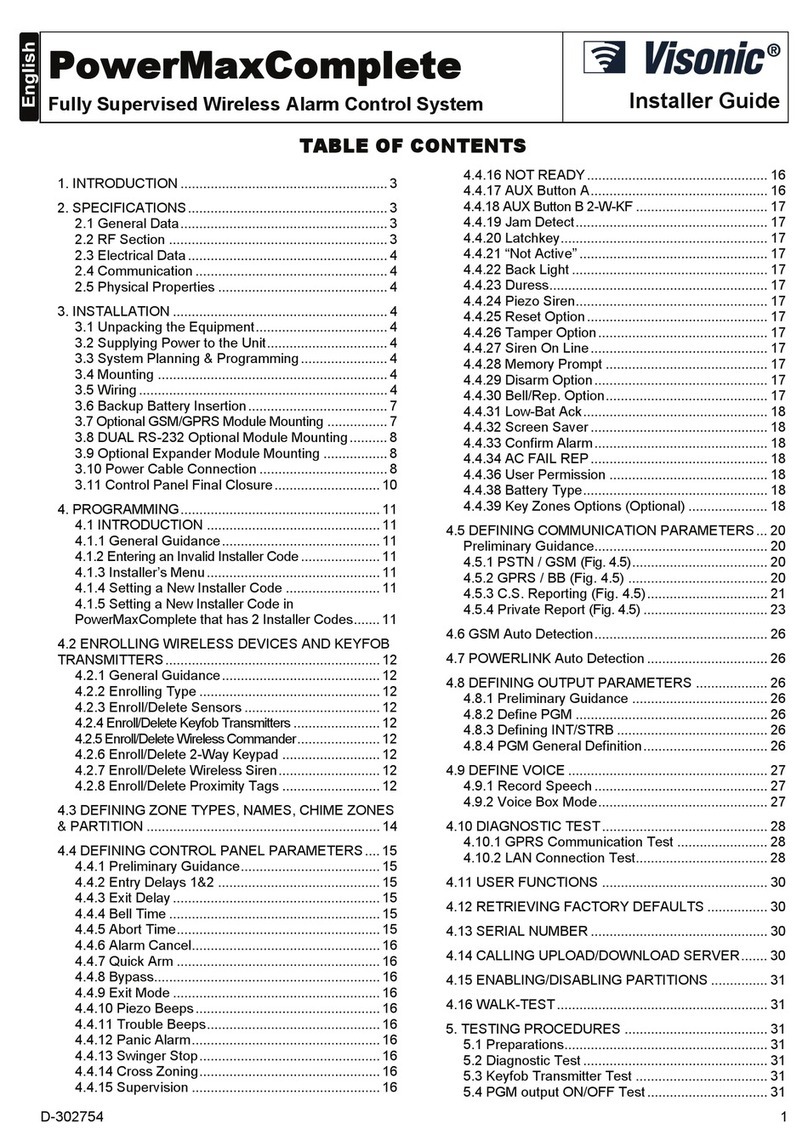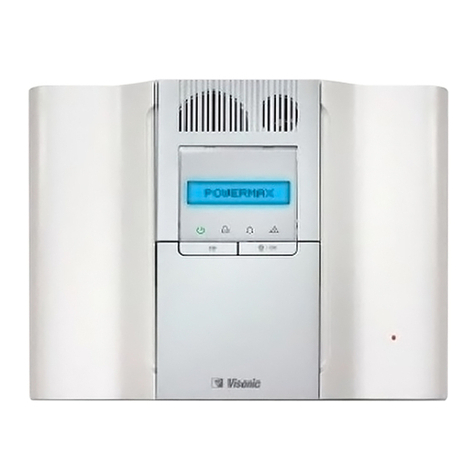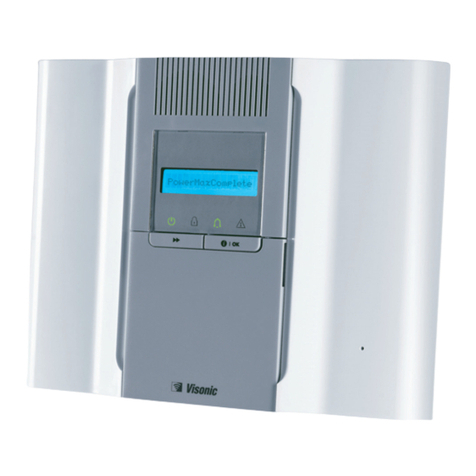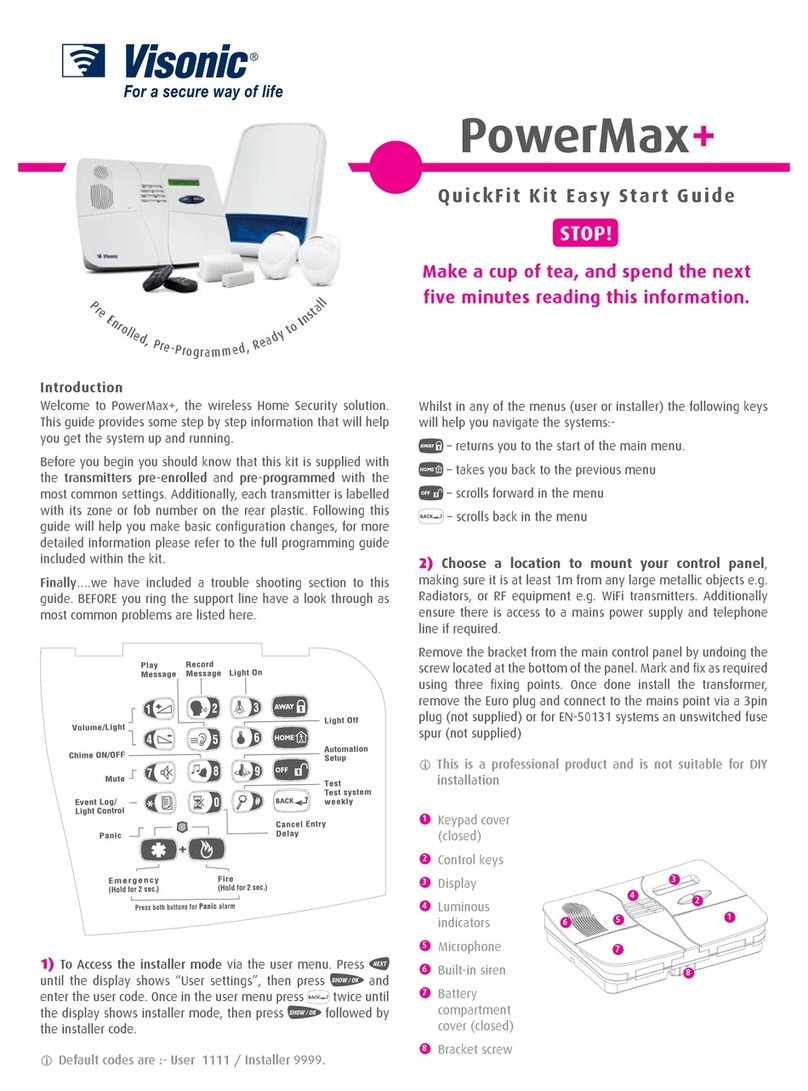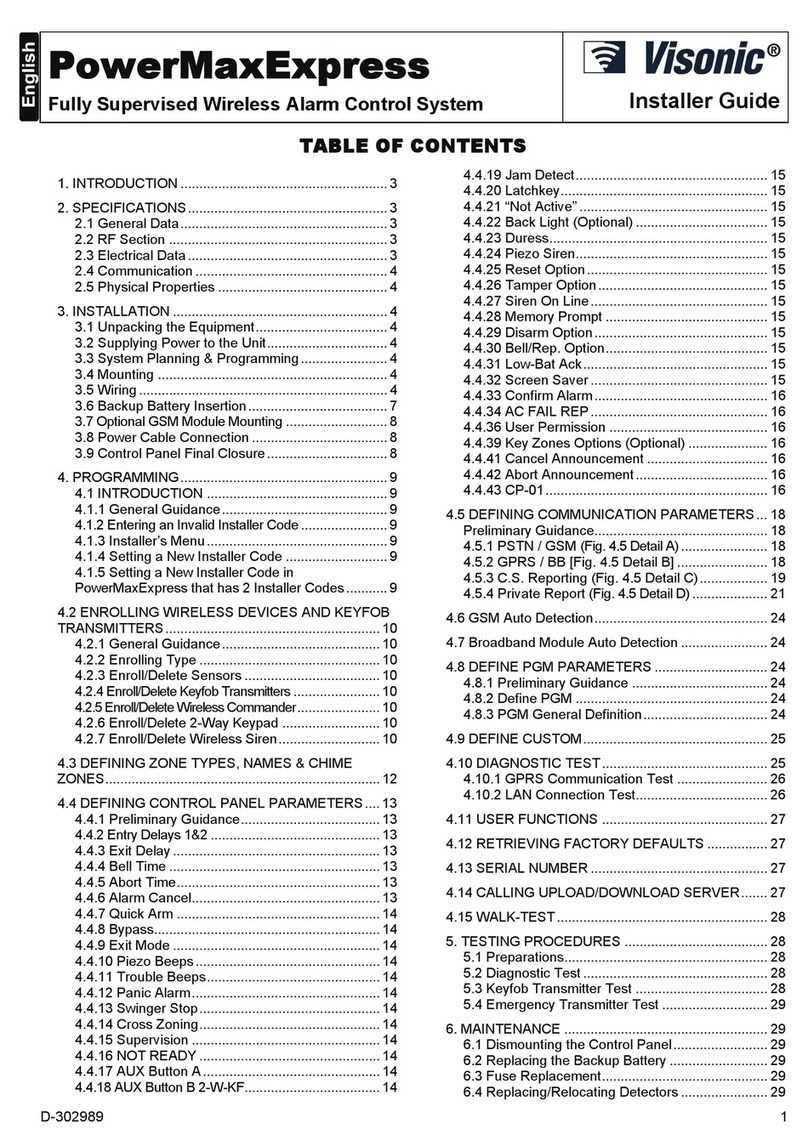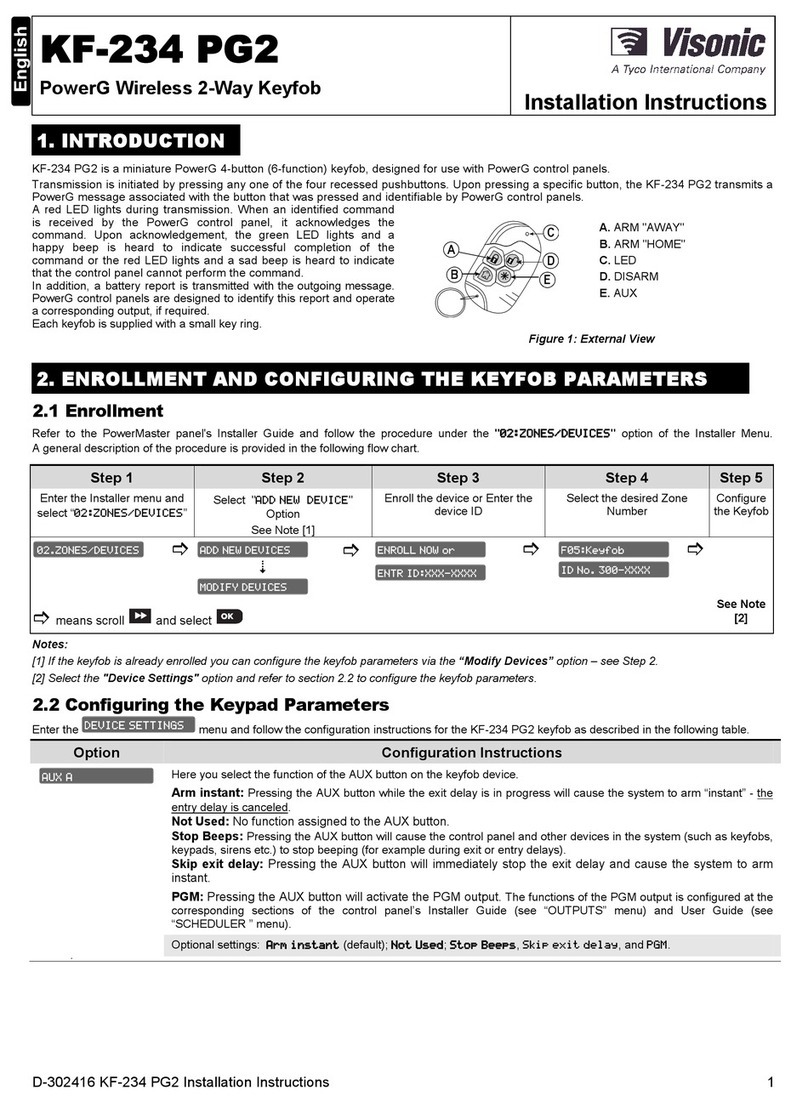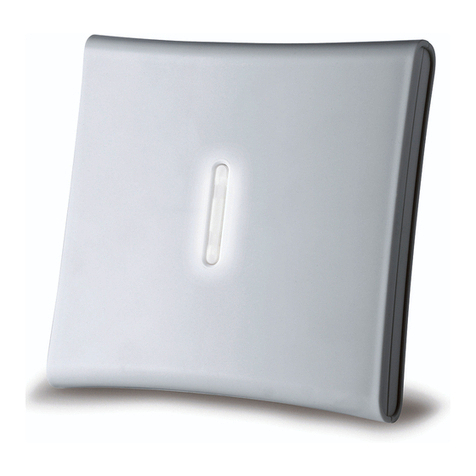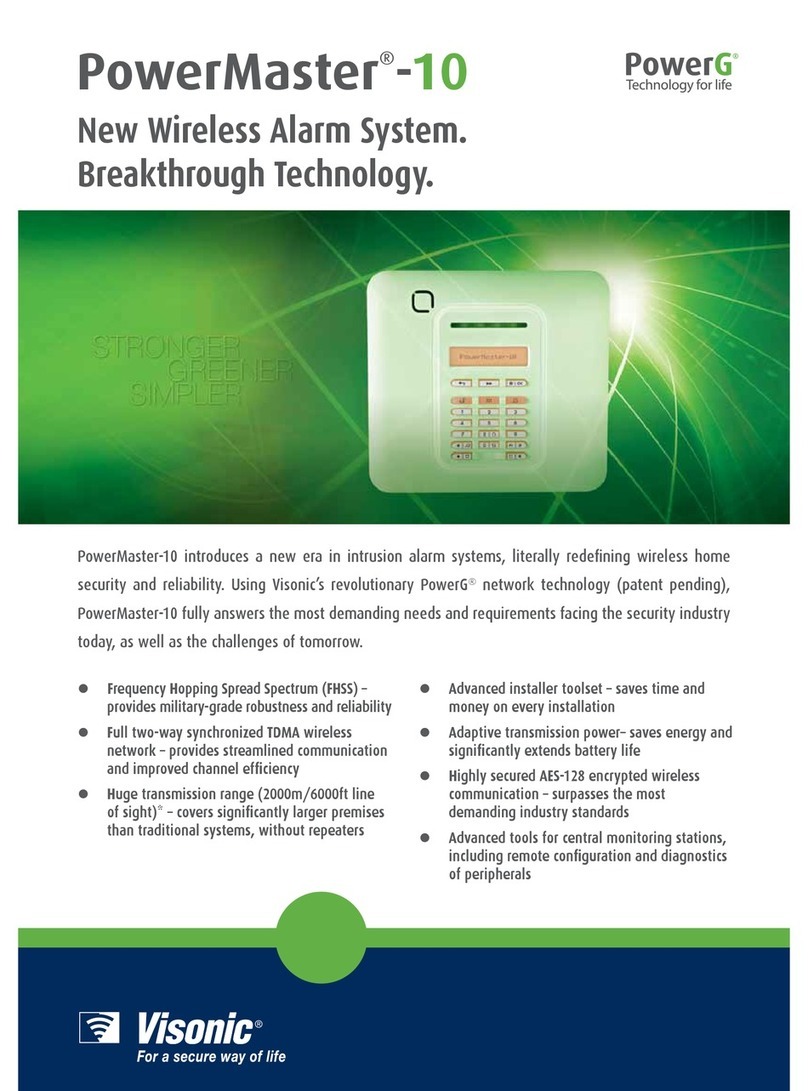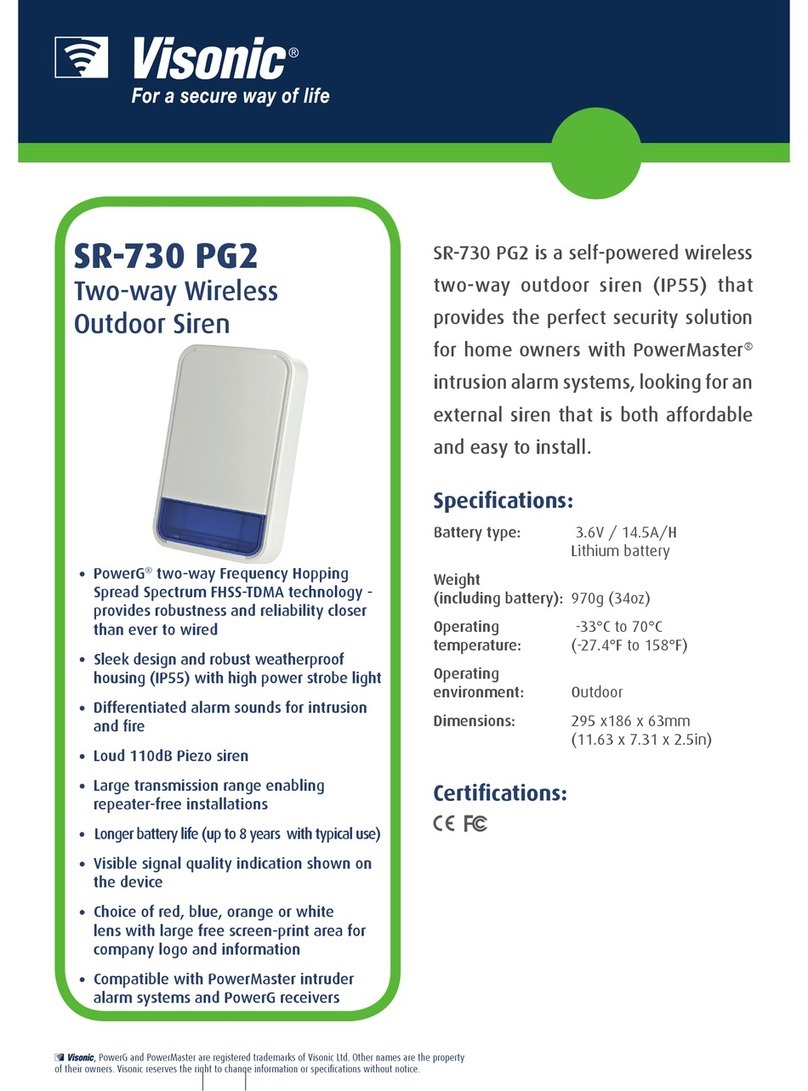DE5803 3
type of wiring is ideal when the dialer is mounted in a locked box
that prevents access to the STOP pushbutton.
Note: Both Z-1 and Z-2 can be programmed as N.O. (normally
open) or N.C. (normally closed) inputs (see Locations 22 & 23 in
Para. 4.7). With N.O. inputs selected, a short circuit across the
relevant input will activate the dialer. With N.C. inputs selected,
an open circuit across the relevant input will activate the dialer.
Use 15 AWG or larger conductor to connect the EARTH terminal
to the nearest electrical ground, preferably a ground rod.
Failure to earth the unit compromises safety!
The phone connected to the SET terminals will be automatically
disconnected from the line whenever the dialer goes into action.
4
44
4. PROGRAMMING
. PROGRAMMING. PROGRAMMING
. PROGRAMMING
4.1 Programming Fundamentals
The DL-125C employs a non-volatile EEPROM, which stores
programmed data and keeps it intact even during power failures.
Programming is carried out from the keypad by entering the
desired variables or by setting logic flags. Every variable is
programmed into a specific location in the memory, and each
location is identified by a LOCATION NUMBER. A set of default
parameters is programmed at the factory and saved in the
EEPROM, but you may change these at will (see Para. 4.7). The
programming format consists of the following successive entries:
[PROG] <LOC> [#] <VAL> [#]
[PROG] and [#] are keys provided on the keypad. [PROG] starts
the programming sequence and [#] confirms the preceding entry.
<LOC> is the location number. A leading zero may be ignored, so
Location 06 may be entered as a single digit – <6>.
<VAL> is the value or code entered into the selected location.
Refer to the PROGRAMMING CHART (Para. 4.7) for a full list
of locations, permissible entries and function details
Caution! If an invalid parameter is entered at any stage, the LED
will flash rapidly for 2 seconds and programming will be aborted.
You will sometimes have to key the hexadecimal digits B, C, D
and E (see Para. 4.2 and 4.5 below) These digits are marked on
certain keys (see Figure 1). To start the hexadecimal mode,
press [∗
∗∗
∗]. The DIAL LED near the keyboard will flash rapidly.
Next, press the key with the desired letter. The keypad will
automatically revert to its normal numerical function, and the LED
will stop flashing. Press [∗
∗∗
∗] again if you wish to key another letter.
Voice recording instructions are given in Paragraph 4.4.
4.2 Entering Telephone Numbers
Telephone numbers are entered in locations 1 through 4 (1st
group) and 5 through 8 (2nd group). The programming format is:
[PROG] <LOC> [#] <NUM.> [#]
A. Enter the programming mode by pressing the PROG key. The
DIAL LED should light steadily.
B. Select the location for the telephone number you wish to
program by keying its location (LOC) number. The DIAL LED
should flash once for each keystroke.
C. Press [#] to confirm the location number. The LED should
flash twice.
D. Key the telephone number (NUM), digit by digit. The DIAL
LED should flash once for each digit. There is a 20-digit limit,
including inter-digit pauses (see following note).
Note: To program pauses between dialed digits, as
sometimes required when PABX systems are used, the
following entries are available:
Code
Letter
Key
Strokes
Resultant Function
B[
∗
∗∗
∗
][1] wait 5 seconds or wait for dial tone,
whichever comes first, and continue
dialing.
C[
∗
∗∗
∗
][2] wait 10 seconds and continue dialing.
D[
∗
∗∗
∗
][3] wait 5 seconds for dial tone and
disengage the line if none is received.
After pressing [
∗
∗∗
∗
], the LED indicator flashes until a letter key is
pressed.
E. Having entered the last digit, finish off by keying [#] .The DIAL
LED indicator will extinguish.
F. To program another telephone number, repeat the procedure
outlined in steps A to E above.
4.3 Deleting Telephone Numbers
A telephone number location will "blank out" if you go through the
programming process as in B above but skip the telephone
number. The deleting format is therefore:
[PROG] <LOC> [#] [#]
Note: The number already programmed into any location
between 1 and 8 may be verified by using the following format:
[PROG] <LOC> [
∗
∗∗
∗
]
This initiates a communication session with the particular
telephone, and provides a chance to verify correctness of the
programmed phone number.
4.4 Recording and Erasing
A. Recording Order
The verbal messages must be recorded in the order given below:
The identification segment first (details of user, or site, or both)
1st alarm segment second (description of 1st alarm type)
2nd alarm segment third (description of 2nd alarm type).
Note: Failure to comply with this rule may produce unexpected
results. If so, just record again in the correct order.
The time available for all 3 segments is 20 seconds, and the
maximum length of the identification segment is 15 seconds.
B. Recording Procedure
Message Segment Actions Required Response
Identification (variable
duration, 15 s max.)
!☛[#]
"within 2 sec.: ☛[AL-1]+[AL-2]
#Keep [AL-1]+[AL-2] down & talk
$Release [AL-1]+ [AL-2]
%☛[#] to save the message
LED flashes once
LED lights steadily
Recording starts
Recording ends
LED extinguishes*
AL-1 (variable duration,
shares remaining time
with AL-2)
!☛[#]
"within 2 sec.: ☛[AL-1]
#Keep [AL-1] down & talk
$Release [AL-1]
%☛[#] to save the message
LED flashes once
LED lights steadily
Recording starts
Recording ends
LED extinguishes*
AL-2 As for AL-1, but press AL-2 instead As for AL-1
*If recording is not carried out exactly as instructed or time limits are exceeded,
the DIAL LED will start flashing to indicate a recording failure. The newly recorded
message as well as the old one will be lost. Record again exactly as instructed.
C. Erasing Recorded Messages
Press [#] - the DIAL LED flashes once. Within 2 seconds, press
[AL-1]+[AL-2], or [AL-1] or [AL-2] depending on which message
you wish to erase. Then press [#] again without recording
anything. The previous message will thereby be erased.
4.5 Dealing with Pagers
You may program the DL-125C to dial a pager's phone number
and send a numeric or verbal message. Communication with a
single pager requires two consecutive locations in the DL-125C
memory - one for the pager's phone number and another for the
numeric data sent to the pager. Since each DL-125C input has 4
memory locations for phone numbers, each input can report to
one pager and 2 regular telephones or just two pagers.
If the pager's phone number is entered into Location No. 1, the
numeric message for that pager must be entered into the next
location (No. 2). If the pager's phone number is entered into
Location No. 2, the numeric message for that pager must be
entered into the next location (No. 3).
Important! Location No. 4 (the last location in the first group) and
No. 8 (the last location in the second group) can't be used for
pager phone numbers - in both cases there is no "next location"
with memory space for the message.


